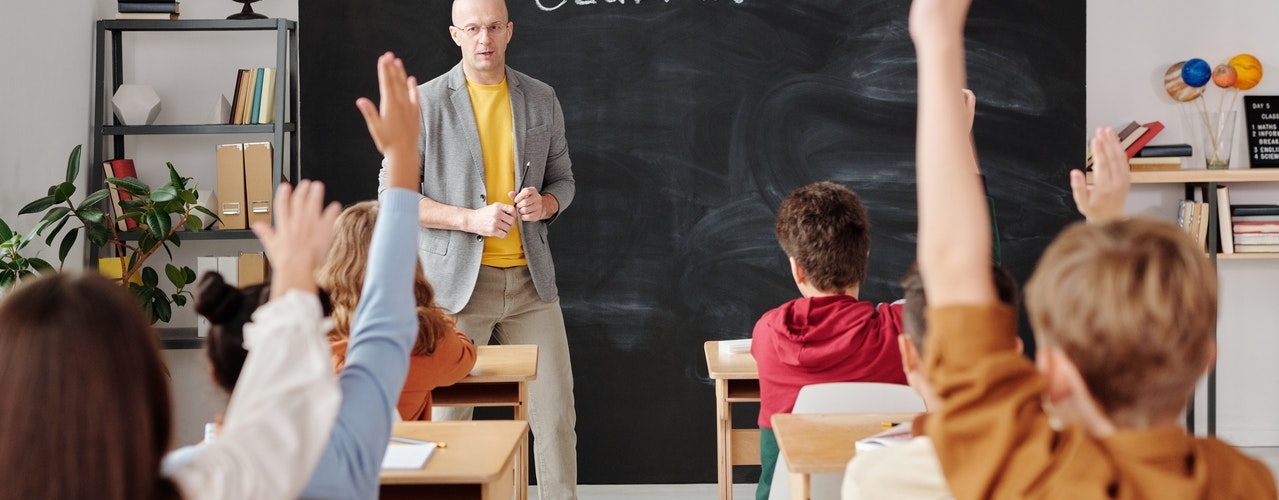Teaching is a juggling act, with responsibilities like lesson planning, school meetings, parent communication, testing, and grading — not to mention actually teaching. What can teachers do to keep all those balls in the air, while still focusing on what matters most: their students?
Using the right strategies and tools, including technology in the classroom, is essential to a productive classroom. And staying flexible is key to maximizing the time you actually spend with your students. Though these approaches may seem simple, they are reminders of what matters most for excellent teaching.
Engaged students = a productive classroom
Students learn best when they feel safe and cared for. They need to feel known, understood, and respected before engaging with the teacher, other students, and class material.
Situations outside the classroom, such as family trauma, poverty, health complications, and community issues can impact a student’s willingness to collaborate with their teacher. An effective teacher should get to know each student: their background, their family, and their academic skill level. While this approach admittedly adds extra work during the introductory period, teachers will benefit from having engaged students in their classroom.
Teacher Emma Volpe gives the example of a student in her classroom who had recently moved from Egypt, spoke only Arabic, and had trouble connecting with the class. She used a translator app to learn more about him, and was even able to obtain an Arabic copy of the book the class was reading. The student no longer sat at the back of the class disengaged but was able to share in the excitement of the story with his peers. Even after finishing the book, this student kept it in sight as a reminder that someone cared about him.
When students know that a teacher cares for them, they lower their defense mechanisms. They feel confident and able to engage with the class. Participation and learning begin.
Have backup lesson plans and activities at hand
Every teacher knows that a lesson plan is a starting point and guideline but that plans go awry just as often as they stay on course. Emergency drills, messages from the office, technical mishaps, and student behavior can disrupt lessons. On the other hand, lessons can go much more quickly than expected, leaving teachers with extra time.
Backup plans, refocusing strategies, and no-prep emergency activities give teachers options in these unplanned class moments.
One activity that can be used for refocusing students when they are distracted or when lesson plans fall short is the “Think-Pair-Share,” writes former educator Tania K. Cowling. With this technique, the teacher provides questions for students to discuss in pairs, thereby encouraging small group discussion. If necessary, the teacher can use that discussion time to develop another plan or transition to a backup activity.
Of course, creating additional lesson plans is a time-consuming task for an already overworked teacher. One way to alleviate the stress of creating multiple backup plans is by collaborating with other teachers, specifically those who are experienced.
Lauren Davis at Schoology agrees. “When teachers come together to share information, resources, ideas, and expertise, learning becomes more accessible and effective for students,” she writes. Asking colleagues to share successful past ideas can be an efficient way to gather more activities and lesson material in less time. The more prepared a teacher is, the more productive a class will be.
Tools to efficiently organize and boost communication
Templates, forms, and calendars are important tools for a productive classroom. Google docs is a good starting point for organizing documents, say Beth Holland, Ph.D., and teacher Tracy Sockalosky. But if you prefer traditional handwritten lesson plans and assessments, bullet journaling can also allow you to keep your thoughts, tasks, and upcoming events organized in one location. Whether you prefer the digital or paper format, keep it consistent to boost efficiency.
Documentation is half of a teacher’s life; communication is the other. Digital communication tools help teachers stay in contact with all stakeholders who are involved with a student’s success, but mostly parents.
School principal Jon Konen notes that at least 95 percent of problems in school are the result of poor communication between parents and teachers. Many issues, whether academic or behavioral, can be prevented when teachers and families communicate about the child. “Exemplary teachers understand that the most popular communication tool is face-to-face communication, with phone calls a distant second,” he writes.
Scheduling time for in-person conversations is difficult for busy teachers and parents alike. Staying organized with calendars and communication is a must. Apps like Bloomz allow teachers to coordinate calendars with parents and communicate directly with them. These features not only help with arranging meeting times, but teachers can also send reminders about school activities and volunteer hours.
When face-to-face conversations simply aren’t possible, messaging apps at least let teachers and parents stay in touch. Teachers can send class updates, student portfolios, and behavior reports in real time. Being proactive with other forms of communication can help parents feel informed and engaged, often solving a problem before it starts.













Send Comment: